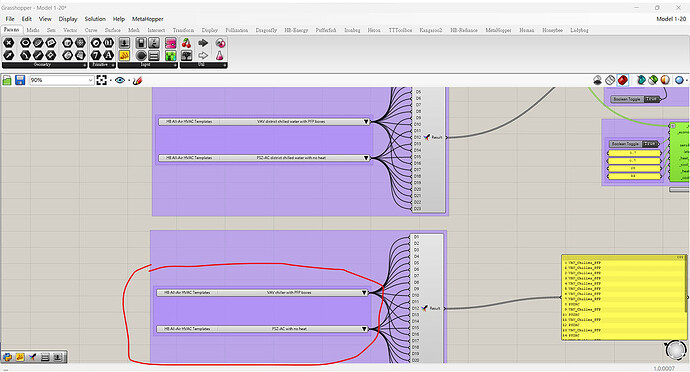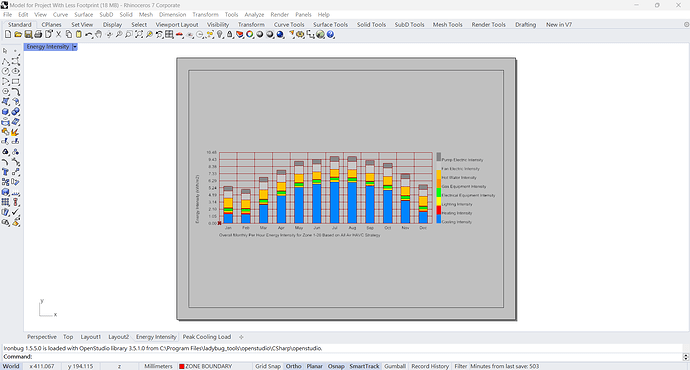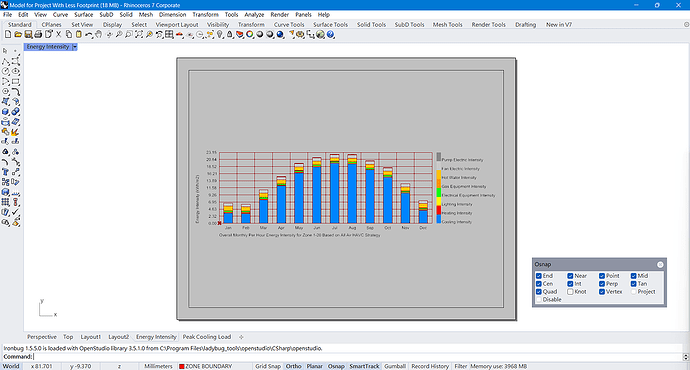is the circled HVAC template applied COP multiplication such that the result of the cooling energy consumption is smaller compared with the district cooling template? if yes, can everybody help me find out the evidence, such as attatching the link of the guide or the source code, which required to explain in the reserach paper
the above result is the typical VAV
the above result is district chilled water VAV
Hi @yinlong ,
Your question is a little vague but I’ll start by saying that all of the HVAC template systems are modeled as fully-detailed systems in EnergyPlus/OpenStudio. This means that the efficiencies of all the pipes, ducts, fans, pumps, chillers, and boilers are being simulated at each timestep of the simulation. So there’s no “COP multiplication” happening here. All of the systems are being modeled in detail with all of the different pieces of equipment modeled accordingly.
Now, what this means for your different VAV systems there is that the cooling energy with the “district chilled water” system is the thermal energy that has to be removed from the water to make the system meet the loads. Assuming that your “Typical VAV” system is one with a “Chiller and Boiler”, then the cooling energy is the electricity that is consumed by the chiller. So it’s not that one system is more efficient than another. The are two different types of cooling energy and you won’t really be able to compare the two unless you know how efficient your district chilled water system might be in your latter case.


